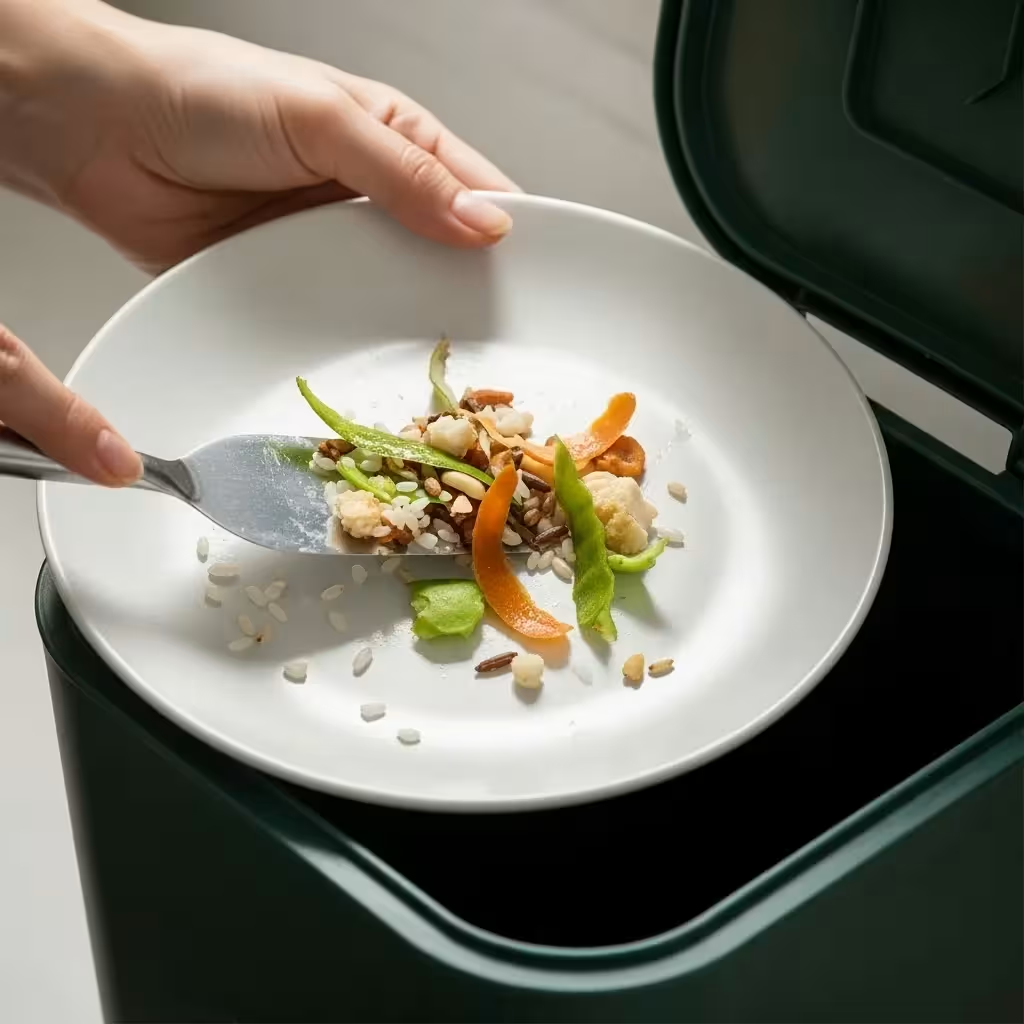
Step 1: Before You Load a Single Dish (The Prep Work)
Achieving a perfect clean starts before the first plate is even placed on the rack. A few simple preparation steps can dramatically improve your dishwasher’s performance, save significant amounts of water and energy, and ensure your detergent works as effectively as possible.
To Rinse or Not to Rinse? The Expert Consensus
This is perhaps the most debated topic in dishwashing, but the expert consensus is clear: scrape, don’t rinse. Wasting time and water pre-rinsing dishes at the sink is not only unnecessary with modern dishwashers, but it’s also counterproductive.
The reason lies in the science of modern dishwasher detergents. They are formulated with enzymes that are specifically designed to break down food proteins and starches. For these enzymes to work effectively, they need something to latch onto. When you pre-rinse your dishes until they are practically clean, the detergent has nothing to work on. In some cases, this can lead to the detergent abrading the surfaces of your dishes, particularly glassware, causing a cloudy appearance over time known as etching. Etching is permanent damage, so avoiding it is crucial for protecting your glassware.
The correct method is to use a spatula, spoon, or paper towel to scrape large food solids—like leftover pasta, bones, or large chunks of vegetables—into the trash or compost bin. A thin film of sauce, grease, or small crumbs is perfectly fine and actually helps the detergent do its job. By skipping the pre-rinse, you can save a remarkable amount of water. According to the U.S. Department of Energy, you can save up to 20 gallons of water per load. Over a year, that adds up to thousands of gallons conserved.
Check Your Water Temperature
Your dishwasher needs sufficiently hot water to dissolve detergent, cut through grease, and sanitize your dishes. The consensus among appliance manufacturers is that the ideal water temperature entering the dishwasher should be approximately 120 degrees Fahrenheit (49 degrees Celsius).
If the water isn’t hot enough, you may be left with greasy residue and undissolved detergent. To ensure your machine gets the hot water it needs, run the hot water tap at the kitchen sink for a minute or two until the water runs hot. This purges the cold water from the pipes, so the dishwasher’s first fill is with water at the proper temperature. Most modern dishwashers have an internal heating element to boost the temperature further, but starting with hot water from your home’s water heater gives it a significant head start, improving performance and sometimes even shortening cycle times.
Choose the Right Detergent and Rinse Aid
The market is filled with options—pods, powders, and gels. While performance varies, high-quality pods or tablets are often recommended by testing groups because they contain a pre-measured, multi-formula combination of detergent, and sometimes even a rinse aid and water-softening agents.
Rinse aid is a crucial, yet often overlooked, component of the dishwashing process. It is not a soap. It’s a surfactant, which means it works by reducing the surface tension of water. During the final rinse cycle, this allows water to sheet off dishes more effectively instead of forming droplets. These droplets, if left to air-dry, are what cause water spots. By using rinse aid, your dishes will not only be spot-free but will also dry much faster and more thoroughly, which is especially important for plastics. Check your dishwasher’s dispenser monthly and refill as needed.

















